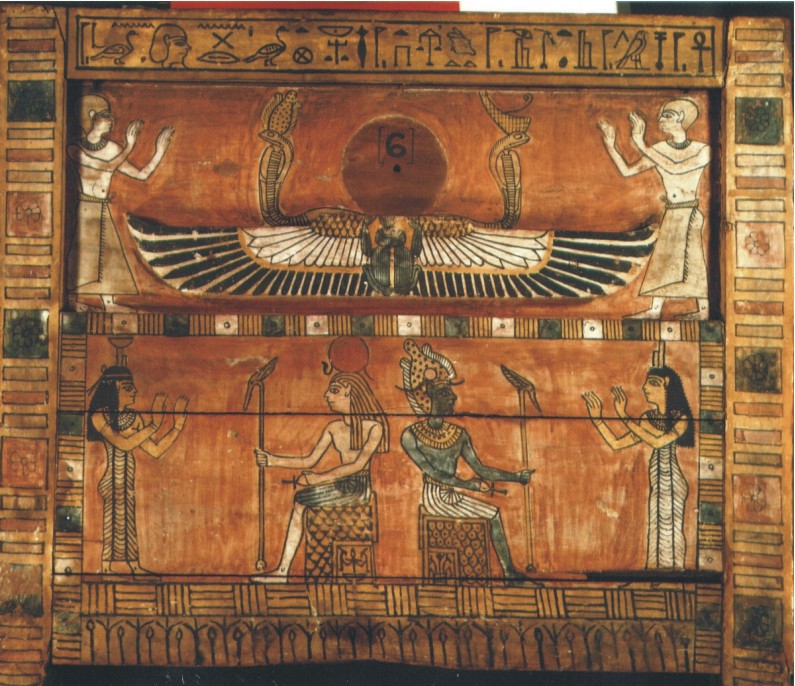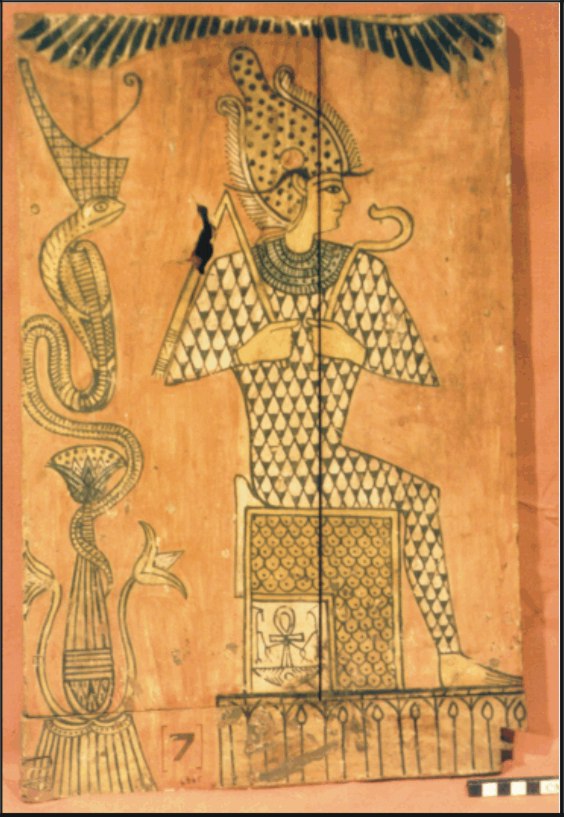W1042
W1042
These two coffin fragments date to the Roman Period and in style are very similar to other pieces from Tuna el-Gebel. Both fragments may belong to the same coffin, though we cannot be sure. They are both end sections of a rectangular outer coffin which, at this date, would have been vaulted with four corner-posts.
Tuna el-Gebel is on the edge of the western desert near to el-Ashmunein. It is the cemetery for Hermopolis.
 The coffin section on the right can be described as follows: On the left the bottom scene shows the goddess Nephthys worshipping the sun god Horus. On the right, the goddess Isis is worshipping Osiris. Above this, the dead person is shown either side of a winged solar disc. He is dressed as a priest with a shaven head. The lower section shows two male seated figures (Horus and Osiris) with two females (Nephthys and Isis). The hieroglyphic frieze at the top includes the names of Horus, Isis and Osiris, ‘Lord of Abydos, the eldest son of the firstborn of Geb’.
The coffin section on the right can be described as follows: On the left the bottom scene shows the goddess Nephthys worshipping the sun god Horus. On the right, the goddess Isis is worshipping Osiris. Above this, the dead person is shown either side of a winged solar disc. He is dressed as a priest with a shaven head. The lower section shows two male seated figures (Horus and Osiris) with two females (Nephthys and Isis). The hieroglyphic frieze at the top includes the names of Horus, Isis and Osiris, ‘Lord of Abydos, the eldest son of the firstborn of Geb’.
 The coffin section on the left can be described as follows: Osiris with crook and flail. Osiris wears a feathered garment and his chair is also feathered. The lotus and papyrus are placed behind him intertwined, as is Wadjyt, the cobra goddess of lower Egypt.
The coffin section on the left can be described as follows: Osiris with crook and flail. Osiris wears a feathered garment and his chair is also feathered. The lotus and papyrus are placed behind him intertwined, as is Wadjyt, the cobra goddess of lower Egypt.
The hieroglyphs display many of the unusual characteristics common at this date. The pink colour is commonly thought to represent the pink of the rising sun suggesting a rebirth in the afterlife. It is common on funerary objects of this period.
For a very similar coffin see Dieter (1990). See also Edgar (1905) nos. 33162. 33181. 33187. 33213.
References
Dieter, K. 1990. Der Sarg der Teüris. – Eine Studie zum Totenglauben im Römerzeitlichen Ägypten, Aegyptiaca Treverensia, Band 6, Mainz.
Edgar, C.C. 1905. Catalogue Général des Antiquités Égyptiennes du Musée du Caire nos. 33101-33285 Graeco-Egyptian Coffins, Masks and Portraits, Cairo.